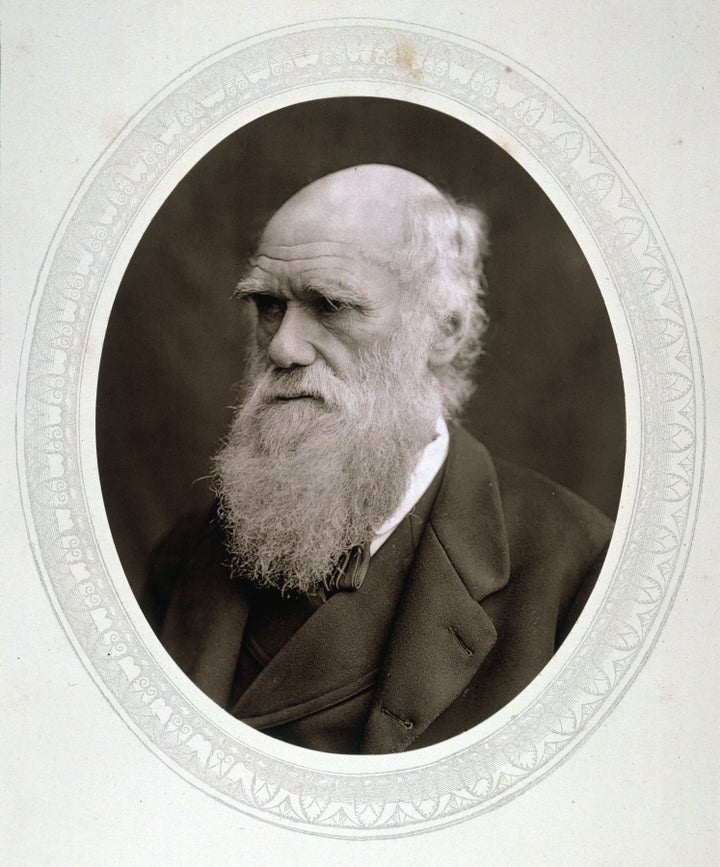
Not two pages into Jonathan Wells' new book, The Myth of Junk DNA, the reader comes across the bold statement that speciation by natural selection has never been observed, and a few pages later that Gregor Mendel, the father of genetics, "found Darwin's theory unpersuasive, and Darwinists ignored his theory for half a century."
How odd.
In fact, Mendel was not at all unpersuaded by Darwin's arguments for the fact of evolution ("descent with modification") or his theory of natural selection to explain it. As geneticist Daniel J. Fairbanks wrote in his book Relics of Eden, he not only read Origin of Species, he was aware of the significance that his own studies on garden peas meant for the evolutionary theory. What Mendel did find unpersuasive was Darwin's later enthusiasm for pangenesis as a mode of inheritance. Wells seems to have misread his history.
As for speciation never being observed, this, too, would come as a shock to anyone familiar with the extensive work being done in the field by H. Allen Orr and by Matthew L. Niemiller, for two examples. But Wells is being very selective in this book, defining evolution by natural selection alone. As we will see, he is quite careful to avoid discussing the other mechanisms of evolution.
So, the reader is not encouraged by inaccuracies like this so early on in the book.
The Myth of Junk DNA is published by Discovery Institute Press, a branch of the Discovery Institute, the creationist-funded organization in Seattle for which Wells works. The book makes two claims. The first is that since the 1970s, avid "Darwinists" have assumed that all non-coding DNA was functionless junk, and that this was further evidence for a notoriously "unguided" process of evolution. But now, to everyone's surprise, Wells argues, researchers are finding that much of the non-coding sequences in the human genome turn out to have interesting functions after all.
In Chapter 5, for example ("Pseudogenes -- Not So Pseudo After All"), Wells cites recent research showing that some pseudogenes, no-longer functional duplicates of coding genes, are turning out to have real functions. This is fine. But -- he fails to point out what a trivial percentage this represents against the 20,000 other pseudogenes (and transposable elements) littered throughout the genome for which scientists have found no apparent functions. Pseudogenes themselves are in the genomic minority: nearly half of the human genome consists of "transposable elements", DNA sequences that can make copies of themselves. One such transposable element, called Alu, is present in more than 1 million copies in each human genome. At the end of this chapter, the reader is left with the misleading impression that biologists are well on their way to finding functions for the entire human genome.
Secondly, Wells claims that because of his first point, that uncritical "Darwinists" were wrong about the non-functionality of so many genes for so long, there is good reason to believe that Darwin's theory itself is in serious dispute.
In contrast, as genomic specialists like T. Ryan Gregory (whose work on genome size Wells walks around very gingerly indeed) have long pointed out, scientific views on the proportion of the genome that is functional are diverse, and that discussions about functions for all sorts of DNA elements have been prominent in the scientific literature for decades. You would never learn this from Wells' book.
Genomes with no junk, for example, do not necessarily imply intelligent design; they would fit quite well with the view of those biologists, like Richard Dawkins, who argue that natural selection really is the prime driver of evolution -- because if junk DNA really were functionless, presumably natural selection would have weeded out those organisms that have too much of it. Indeed, this has been the default assumption for many biologists since the discovery of DNA that does not encode proteins.
On the other hand, the presence of copious amounts of junk DNA fits well with those biologists who think the other mechanisms of evolution, such as genetic drift or the spread of transposable elements, are major drivers of genome evolution, and that much apparently useless DNA would pass on from one generation to the next, as long as it was not overly harmful to reproductive fitness.
This is not a trivial point. Wells never discusses anything other than natural selection. He carefully avoids the other mechanisms of evolution. One looks in vain, for example, of any account of genetic drift or neutral theory. It's not even listed in the index. Why? Perhaps because both of these mechanisms are highly stochastic, or random: the really unpredictable, chancy mechanisms of evolution that creationists object to the most. And pseudogenes are generated randomly.
To his credit, Wells often points out that the authors of the large number of papers he cites are themselves not moved to doubt evolution because of their work.
That said, it's simply bizarre to read an author who rejects one of the bedrock principles of Darwin's theory -- common ancestry, but is nevertheless happy to cite evidence for common ancestry when it's convenient to his argument. In chapter 4, ("Introns and the Splicing Code", p. 42), we're told that "In 2007, Europeans scientists found eleven sequences in the introns of a gene involved in organ development that were conserved from pufferfish to humans."
Conserved from pufferfish to humans. That is: gene sequences preserved across quite a stretch of the tree of life and across many species -- being cited favorably by a creationist who... rejects common ancestry. But perhaps Wells doesn't think his readers will notice the irony.
Finally, there is throughout the book a distracting anti-science rhetoric and attacks on scientists who have provided some of the nicest confirmations of predictions based on evolutionary theory.
In the appendix, for example, "The Vitamin C Pseudogene", Wells attacks both University of Chicago biologist Jerry Coyne and Brown University biologist Kenneth Miller for citing the GULO gene as evidence for evolution.
The so-called GULO sequence codes for an enzyme that, along with three others, helps many animals synthesize vitamin C. Humans, and several relatives on the primate tree, have an inactivated version of the gene, with the result that we can't synthesize our own vitamin C, and we need to eat foods with the vitamin to make up for what would be a crippling deficiency.
How is this related to evolution? We share this inactivated gene with our closest relatives. Not only do chimpanzees have the same inactivated gene, it lies on the same corresponding chromosome. Coyne and Miller have rightly pointed out that this is powerful evidence of common ancestry. Miller also pointed out in his book Only a Theory, that the inactivation of this gene in some but not all animals poses a puzzle to ID theorists. Wells takes exception to this, claiming, implausibly, that ID would be fine with a random scattering of mutated genes in some species but not others. He justifies this by citing an idea he himself does not take seriously: the fanciful speculation of ID proponent Michael Behe that life started with a single cell that was front-loaded with all the genetic code needed to produce all descendant organisms on Earth. (Wells, Casey Luskin, William Dembski, and other leading figures at the Discovery Institute all reject common ancestry.)
He further writes: "In addition to mischaracterizing ID, Miller went well beyond the published scientific evidence available at the time. For example, as of 2008 (when Miller's book appeared), there were no published data on the gorilla's need for dietary vitamin C."
This is false. Wells may not have been able to find any published evidence on the need for vitamin C in the diet of the gorilla, but it exists.
Linus Pauling wrote about this in 1970 ("Evolution and the Need for Ascorbic Acid," PNAS 67: 1643), and cited an earlier 1949 paper by G. H. Bourne in support of the observation that gorillas do indeed have a need for significant amounts of vitamin C in their diets.
Further, it was, in fact, general knowledge that humans' primate relatives also need vitamin C when Ohta and Nishikimi published their 1999 paper (Biochimica et Biophysica Acta 1472: 408) in which they noted that "humans, other primates, and guinea pigs" cannot synthesize vitamin C. In their study they noted that their results "provide molecular evidence that the primates' loss of GLO which resulted in the incapability of vitamin C synthesis goes back to dates at least before separation of apes and old world monkeys."
In other words, Miller's statement that gorillas do indeed need vitamin C -- just as would be predicted by evolutionary theory -- was well-established in the literature when Miller wrote his book.
To close: The Myth of Junk DNA cannot be recommended for anyone who takes evolutionary biology seriously. But it will do what the Discovery Institute wants it to do: provide further rationalizations for creationists who loath common ancestry, who loath natural selection, who loath indeed the whole process that led to the generation of what Darwin called "endless forms most beautiful."
